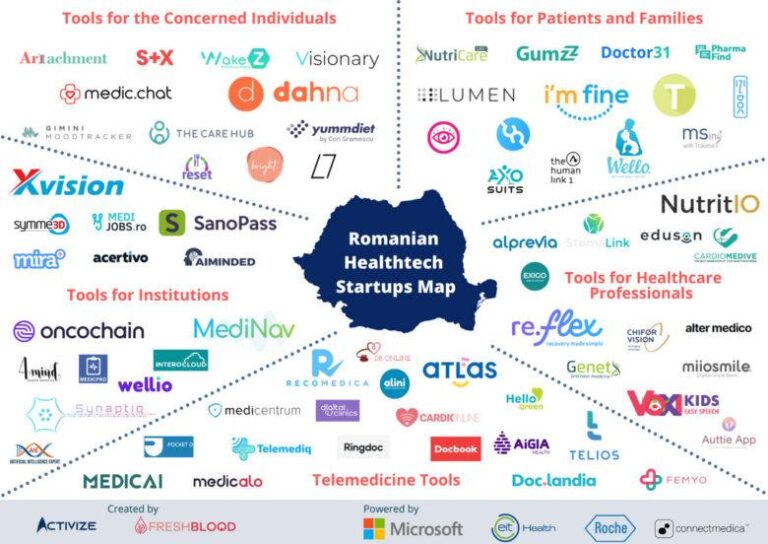In today’s rapidly evolving healthcare landscape, HealthTech startups are emerging as powerful catalysts for innovation. By harnessing cutting-edge technologies such as artificial intelligence,telemedicine,and wearable devices,these agile newcomers are transforming the way healthcare is delivered,managed,and experienced.Unlike traditional healthcare institutions, HealthTech startups possess the flexibility to experiment, iterate, and implement solutions at an unprecedented pace, addressing longstanding challenges from patient engagement to data interoperability. This article explores how HealthTech startups are not only driving technological advancements but also reshaping the healthcare ecosystem to improve outcomes, reduce costs, and enhance access to care worldwide.
Table of Contents
- The Role of cutting-Edge Technologies in Transforming Patient Care
- Strategic Collaborations Between HealthTech startups and Traditional Healthcare Providers
- overcoming Regulatory Challenges to Accelerate Innovation Adoption
- Best Practices for Funding and Scaling HealthTech Innovations
- In Retrospect
The Role of Cutting-Edge Technologies in Transforming Patient Care
Recent advancements in technology have revolutionized how healthcare is delivered, enabling personalized and efficient patient care like never before. From AI-powered diagnostic tools that analyze vast datasets within seconds to wearable devices monitoring vital signs in real-time, these innovations empower clinicians to make faster, more accurate decisions. Blockchain technology,for example,enhances patient data security and facilitates seamless facts sharing across multiple platforms,ensuring continuity of care that is both clear and reliable. By integrating these sophisticated tools into clinical workflows,healthcare providers can reduce errors,optimize treatment plans,and ultimately improve patient outcomes.
Key technological breakthroughs reshaping patient care include:
- Artificial Intelligence (AI) and Machine Learning: Automating diagnostic processes and predicting disease progression.
- Telemedicine Platforms: Expanding access to healthcare services nonetheless of geographic barriers.
- Wearable Health Monitors: Allowing continuous monitoring outside clinical settings for proactive intervention.
- Blockchain: Securing patient records and streamlining data interoperability.
- Robotics: Assisting in precision surgeries and routine hospital tasks to enhance efficiency.
These cutting-edge technologies not only transform the patient experience but also empower providers to deliver care that is predictive, preventative, and profoundly personalized, illustrating the critical role innovation plays in evolving modern medicine.
Strategic Collaborations Between HealthTech Startups and Traditional Healthcare Providers
The fusion of HealthTech startups with established healthcare providers creates a dynamic ecosystem that accelerates healthcare innovation. By combining the agility and cutting-edge technology of startups with the clinical experience and vast patient networks of traditional institutions,these alliances forge new pathways for patient care. this synergy fosters enhanced data-sharing frameworks,improved diagnostic tools,and personalized treatment plans that were once unimaginable. Ultimately, it drives a holistic approach where technology and human expertise complement each othre, reshaping how care is delivered and experienced.
Key benefits emerging from these partnerships include:
- Access to real-world testing environments: Startups gain invaluable insights by piloting their solutions within clinical settings.
- Resource and knowledge exchange: Healthcare providers leverage startup innovation while offering mentorship and infrastructure support.
- Acceleration of regulatory approval processes: Collaborative efforts streamline compliance with healthcare standards and regulations.
- Improved patient outcomes: Strategically integrated technologies lead to more effective diagnoses and treatments.
These collaborations are not merely transactional; they represent a paradigm shift toward co-creating future-ready healthcare solutions that respond swiftly to evolving medical challenges.
Overcoming Regulatory Challenges to Accelerate Innovation Adoption
HealthTech startups frequently enough find themselves at the intersection of groundbreaking technological advancements and a complex,evolving regulatory landscape. Navigating this terrain requires a deep understanding of compliance frameworks such as HIPAA, GDPR, and the FDA’s evolving guidelines, which can vary considerably across regions. instead of viewing these regulations as obstacles, startups that proactively engage with regulatory bodies and incorporate compliance into their advancement lifecycle gain a strategic advantage, accelerating product approval and market entry. By fostering transparent interaction channels and adopting a risk-based approach to innovation,these companies can address safety and efficacy concerns early,ensuring smoother pathways for adoption.
Strategies that have proven effective in mitigating regulatory hurdles include:
- Collaborative partnerships: Working alongside healthcare providers, legal experts, and regulators to anticipate and integrate compliance requirements.
- Agile documentation: Implementing flexible yet comprehensive documentation processes that adapt to updates in regulatory standards without compromising timeline progress.
- Data security prioritization: Embedding robust encryption and privacy protocols to safeguard patient information,which builds stakeholder trust and satisfies stringent audits.
- continuous education: Training internal teams on regulatory changes to maintain adherence and foster a culture of compliance-conscious innovation.
By embedding regulatory strategy into their core operations,HealthTech startups not only reduce time-to-market but also solidify credibility in the healthcare ecosystem,paving the way for sustained innovation and broader acceptance of cutting-edge solutions.
Best Practices for Funding and Scaling HealthTech Innovations
Accomplished funding and scaling of HealthTech innovations require a multifaceted approach that balances visionary thinking with pragmatic execution. Startups should prioritize securing capital not just through traditional venture investment but by engaging with strategic partners such as healthcare providers,insurers,and goverment bodies. These collaborations provide critical credibility and enable smoother integration of new technologies into existing ecosystems. moreover, founders must emphasize clear regulatory pathways and robust clinical validation early to reduce risks and attract investors focused on long-term sustainability.
To effectively scale, HealthTech companies must build a flexible infrastructure that adapts to evolving market needs and regulatory landscapes. Key best practices include:
- Leveraging data analytics to optimize product iterations and personalize patient outcomes.
- Investing in user-centric design to enhance adoption by both patients and healthcare professionals.
- Establishing agile operational frameworks that encourage rapid experimentation without compromising quality or compliance.
By integrating these strategies, startups can create scalable models that not only attract funding but also deliver measurable impact within healthcare systems globally.
In Retrospect
HealthTech startups are undeniably at the forefront of transforming the healthcare landscape. By leveraging cutting-edge technologies and innovative approaches, these agile companies are not only addressing longstanding challenges but also creating more personalized, efficient, and accessible care solutions. As the healthcare industry continues to evolve, the role of HealthTech startups will be pivotal in driving sustainable innovation and improving patient outcomes worldwide. For stakeholders across the spectrum—from policymakers to clinicians and investors—embracing and supporting these dynamic innovators is essential to realizing the full potential of next-generation healthcare.

